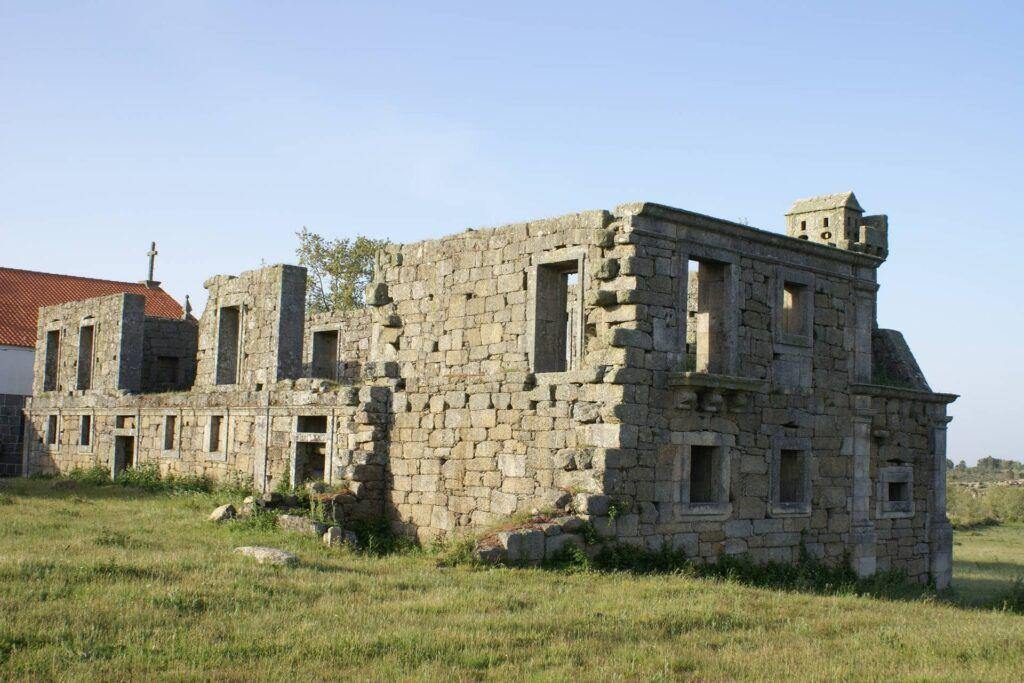Sacaparte Dolmen
In the vicinities of the Sacaparte Convent, exist the ruins of a Dolmen. Of this primitive monument only three rocks prevail, that are the rest of a more complex construction, of whcih we only can see a small part, for the monument was deteriorated through time by farm and forest works and the reuse of the rocks in walls of properties nearby. The way the stones were placed were carefully oriented E-SE of the construction main axis confirms that is a prehistorical building. These burial constructions were composed by stones more or less vertical, in variable numbers – the mainstays, covered by a great horizontal slate – the table or hat, forming a chamber that stretches, sometimes, through a also covered corridor. The burial chambers could have large dimensions, with excess of 2 meters high, but also smaller, lower, as seems to be the case. But a dolmen was not reduced to a mere stone cascket. These slates were covered by a pile of smaller rocks and dirt that completely covered the stone structure, forming a soft elevation in the terrain, popularly knowed as “mamoa”. The dolmen we see today are significantly altered, only remaining the inner chamber. In the Sacapare Dolmen we can still see smaller rocks around the nested stones, testifying its original coverage. Mortal remains were deposited in these structures, of individuals of the neolithis and chalcolithis communities that inhabited the region during the 4th and 3rd millenia b.C. Together with the spoils some pieces of pottery and carved stone artifacts were also deposited. Many times the mainstays of the dolmes showed paintings or carvings of schematic art, of unknowned significance, that contribute to the dating of the monument, what does not seem to be the case in this example. The Sacaparte Dolmen is the only megalithic trace preserved in the Sabugal municipality, despite being quite wrecked. However, we know that in the region of the upper Côa valley was rich in terms of magelithism, for there have existed, at least nine other dolmes in the current, that were destroyed throughout times: five in Ruivós, two in Aldeira da Ribeira, one in Cardeal (Rendo) and one other in Bendada.




